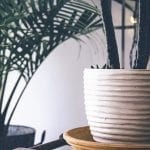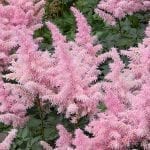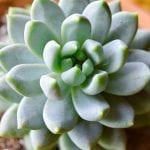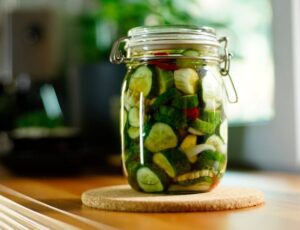
Repotting Indoor Plants: A How-To Guide
Indoor greenery adds beauty to a room and can help you breathe more easily. Indoor plants purify the air and contribute oxygen and humidity to inside spaces.
But indoor plants can outgrow their container. Here we’ll cover repotting indoor plants- how to know when it’s time to repot, and the best way to move your plant to a larger container for healthy, thriving plants.
Why is it necessary to repot indoor plants?
Nutrient Depletion
Indoor greenery takes in most of its nutrients through the soil. Over time, potting soil gradually decreases in nutrient value – even with regular fertilization. Repotting your indoor plant in new potting soil will provide a much-needed nutrient boost.
Crowded Roots
After several years in the same pot, your plant may become “root bound.” Continuing, root bound means that the plant’s roots have become crowded.
Eventually, the roots grow so long that they wind around the inside of the pot. A root-bound plant cannot properly absorb the moisture it needs and is more prone to disease.
Repotting your greenery in a more roomy pot will allow your greenery to quench its thirst. Plus, repotting a root-bound plant promotes healthy, new growth.
Disease Prevention
An over-watered plant may develop root rot. Roots that are damaged by overwatering turn black or dark brown.
These roots are unable to absorb moisture and are susceptible to disease. Also, trimming the damaged roots and repotting the plant will help it recover.
Dividing Plants
Some indoor plants that become crowded can be divided to make new plants. If you own a bromeliad or Sago palm, it’s an excellent opportunity to divide and propagate sprouted offshoots or pups.
How can I tell when I need to repot my houseplant?
Does your greenery need a new home? Keep these signs and symptoms in mind when repotting indoor plants.
Overgrown roots
If roots emerge from the drainage hole or peeking through the top layer of the soil, it is time to repot.
Lack of water absorption
When you water your plant, does it seem like the moisture flows through the pot and out the drainage hole rather than soaking into the soil? This is likely a sign of root rot or crowded roots and time to repot.
A too thirsty plant
Does your indoor plant always look thirsty no matter how often you water it? It may be experiencing root rot. Trim dark brown or black roots to prevent disease and repot it so they will thrive again.
Stunted growth
Has your indoor plant stopped growing? It’s likely a sign of being pot-bound.
Gently turn the container on its side and peek at the roots. If they coil around the inside of the container, it’s time to move your greenery to a more spacious container.
Slowed growth
Does your indoor plant appear weak with little growth? Has the foliage color faded? Repotting indoor plants in new, vitamin-rich soil will make them perk up and ‘smile’ again.
Should I repot my plant in a larger container?
Yes, repot your plant in a slightly larger container- an additional one to three inches in circumference is recommended. Additionally, repotting it in a larger pot allows your plant to stretch its legs and grow healthy once again.
How Do I Repot My Indoor Plant?
1
– Prepare your houseplant for ‘moving day’ by watering it well a day or two beforehand. Furthermore, ensuring that your houseplant always has water will minimize plant shock and make removing it from the pot easier.
2
– With one hand, hold the container from the bottom. Place your other hand on top of the potting soil and gently tip the pot to one side.
The plant and soil should slide out in one piece. If the plant is stuck inside the pot, try one of these methods:
- If dry potting soil is causing it to stick, tap the side of the container to loosen it.
- Or, the plant may be packed tight in the container due to root growth (root bound). Take a small kitchen knife and loosen the roots by moving the knife around the perimeter of the pot.
3
– Gently remove the plant and set it on a flat surface. Carefully loosen the root ball and remove any extra potting soil around the roots.
Also, examine the roots for any dark brown or black as this may be a sign of disease or root rot. Clip any dark-colored roots with garden snips.
Additionally, if you see your greenery is root bound, trim away approximately 1/3 to 2/3 of the roots, which will be at the sides of the plant, before you place them in a new pot.
4
– Dump any soil remaining inside the pot. Select a new container that is 1 to 2 inches larger in diameter than the existing pot.
Avoid a pot that is larger than the recommended additional 2 inches as it may slow growth and make your greenery susceptible to root rot.
5
– It’s best to choose a container with a drainage hole, but if your pot has none, create a water barrier at the bottom of the pot by adding a 1/2 ” to 1″ layer of activated charcoal or smooth pebbles to the base of the pot before you replant.
6
– Next, add a layer of fresh potting soil to the container. Add enough soil that the indoor plant’s base will sit approximately 1/2″ below the rim.
7
– Add your houseplant to its new home, filling in around the sides with new potting soil. Furthermore, gently firm the soil around the base of the plant with your fingertips to remove any air pockets.
8
– Water your greenery until the soil is moist but not saturated.
Did you know? If your indoor greenery looks wilted or stressed, it is best to wait before placing the indoor plants in new pots. Give it a good drink and let your plant recover before you transfer your greenery to its new home.













